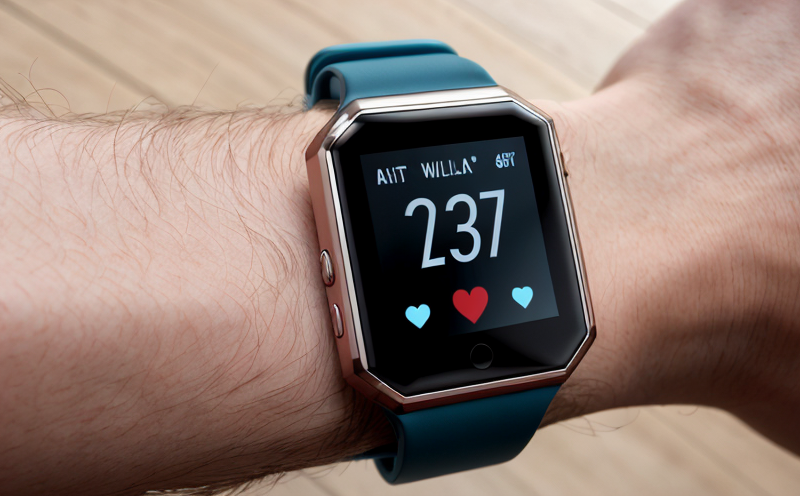API Security Testing for Connected Wearable Platforms
The integration of wearable technology into our daily lives has brought about significant advancements in health and wellness management. However, the connectivity that makes these devices so powerful also introduces vulnerabilities. In this context, API security testing is crucial to ensure the integrity and privacy of user data transmitted between connected wearables and backend systems.
The primary objective of API security testing for wearable platforms is to identify and mitigate potential weaknesses in communication protocols that could be exploited by malicious actors. This service focuses on ensuring secure, reliable, and compliant data exchange using industry-recognized standards such as ISO/IEC 27034:2019.
The process involves a comprehensive examination of the APIs used to transmit health metrics like heart rate, step count, sleep patterns, etc. We employ various methodologies including manual testing, automated tools, and penetration testing techniques to assess security risks such as unauthorized access, data tampering, and injection attacks.
Our team of experts works closely with device manufacturers and healthcare providers to ensure that all tests align with regulatory requirements set by organizations like the FDA and IEC. This collaboration ensures that the connected wearables not only function correctly but also protect sensitive health information from unauthorized access or manipulation.
By focusing on API security, we help clients build trust among their users while complying with strict data protection regulations. Our goal is to provide a robust foundation for secure communication between devices and servers, which ultimately enhances the overall user experience without compromising safety or privacy.
| Key Components of API Security Testing | |
|---|---|
| Data Encryption | Ensures that all transmitted data remains confidential during transit. |
| Authentication Mechanisms | Verifies the identity of both parties involved in communication to prevent unauthorized access. |
| Access Control | Limits who can interact with specific parts of an API based on role or permission level. |
| Error Handling | Properly manages errors to avoid exposing sensitive information through error messages. |
In summary, our API security testing service is designed to safeguard the integrity and privacy of health data exchanged via connected wearables. By leveraging advanced technologies and adhering strictly to recognized standards, we provide a secure environment that meets both industry best practices and regulatory expectations.
Scope and Methodology
The scope of this service encompasses all aspects related to ensuring the security of APIs used in connected wearable platforms. This includes but is not limited to:
- Data encryption protocols such as TLS/SSL for secure data transmission.
- Authentication mechanisms like OAuth 2.0 or JWT tokens to verify user identity.
- Access control policies tailored specifically for healthcare applications.
- Error handling strategies that prevent sensitive information disclosure.
| Testing Methodologies Employed | |
|---|---|
| Manual Testing | Involves human testers examining code, configurations, and interactions to identify vulnerabilities. |
| Automated Tooling | Utilizes software tools designed to automate repetitive tasks and enhance efficiency. |
| Penetration Testing | Simulates real-world attacks to test the resilience of API defenses against malicious attempts. |
The methodology also involves continuous monitoring post-deployment to ensure ongoing security. Regular updates are provided based on new threats identified through research and analysis.
Benefits
Implementing API security testing offers numerous advantages for wearable device manufacturers, healthcare providers, and end-users:
- Enhanced Security: Protects personal health information from unauthorized access or manipulation.
- Compliance: Meets regulatory standards set by organizations such as the FDA and IEC.
- User Trust: Builds confidence among users regarding the safety and privacy of their data.
- Improved Reputation: Demonstrates a commitment to ethical practices, which can improve brand image.
- Potential Cost Savings: Reduces risk exposure by preventing costly breaches or fines.
The ultimate goal is to create a secure ecosystem where connected wearables can contribute effectively to better health outcomes without compromising user privacy and security.
Use Cases and Application Examples
API security testing applies broadly across various sectors within the healthcare industry. Here are some specific use cases:
- Hospital Management Systems: Secure communication between wearables worn by patients and hospital databases.
- Telemedicine Platforms: Ensuring HIPAA compliance for data exchanged between connected devices and remote medical professionals.
- Insurance Companies: Verifying patient health information securely to assess insurance claims accurately.
| Application Examples | |
|---|---|
| Smartwatches Monitoring Heart Rate Variability (HRV): | Data transmitted securely to analyze potential stress levels or cardiac issues. |
| Continuous Glucose Monitors (CGMs): | Secure connection ensures accurate monitoring and timely alerts for users with diabetes. |
| Blood Pressure Monitors: | Ensures that critical health data is accurately transmitted to healthcare providers. |
These examples illustrate how API security testing plays a vital role in enhancing the reliability and safety of connected wearable platforms. By focusing on these areas, we ensure that our services meet high standards of quality and performance.





